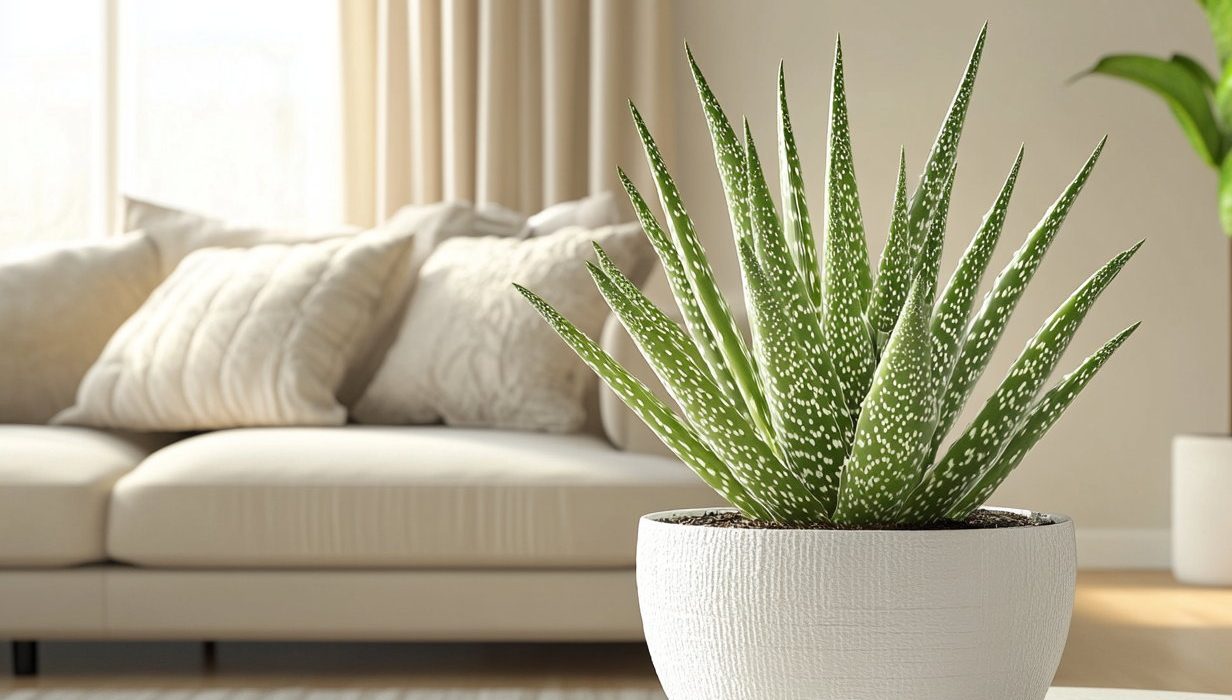These nutrient-rich houseplants bring wellness within reach, offering both beauty and benefit in the comfort of your own home.
There is a quiet kind of magic in tending to plants. In kitchens and on balconies, plants can do more than brighten a room; they can replenish energy, ease the digestive process and support the body’s natural balance. These eight superfood plants, all suited to growing indoors, bring a deeper layer of wellness into the home.
Mint
Mint grows easily and quickly in small pots and acts as a balm for both the body and the senses. Its leaves are rich in menthol, which helps relax the intestinal muscles and relieve digestive discomfort. A few sprigs steeped in hot water create an uplifting tea that sharpens focus while easing bloating. Keep your mint plant in a container near natural light, and trim regularly to encourage lush growth.
Ginger
Though ginger is technically an outdoor root, it can be grown indoors too. Simply pick a fresh organic piece of ginger, one that has visible eyes. Plant it in moist soil and place it in a warm, well-lit spot. The emerging leaves are ornamental, and in time, the root itself can be harvested. But you need some patience for this one. Rich in gingerol, it boosts circulation, supports digestion and provides a steady, grounding energy when grated into teas or soups.
Basil
With its sweet, peppery scent and lush green leaves, basil brings both culinary and medicinal qualities to an indoor garden. It is known to reduce inflammation, aid digestion and combat fatigue. Basil loves warmth and direct sunlight, making it perfect for a south-facing windowsill. Pick leaves regularly to keep the plant producing, and enjoy it fresh atop salads or grind it up with some nuts, salt and olive oil to make a delicious pesto.
Aloe Vera
Beyond its reputation for skin healing, aloe vera is a superb digestive tonic. The gel inside its thick, spiky leaves helps soothe the gut lining, ease constipation and improve nutrient absorption. Aloe requires very little water and thrives in indirect sunlight, making it one of the easiest superfood plants to grow indoors. Use only the inner gel from mature leaves, avoiding the bitter yellow latex beneath the skin.
Lemongrass
Lemongrass can be grown from fresh stalks placed in water until roots emerge. Once planted in soil and given plenty of sunlight, it develops tall, slender blades with a fresh, lemony fragrance. It contains citral, which supports digestion and offers antimicrobial benefits. A stalk simmered in tea or broth delivers a gentle, refreshing lift to both body and mood.
Fenugreek
Fenugreek is often grown as microgreens indoors, sprouting in just a few days and requiring little more than a sunny windowsill and shallow soil. The delicate leaves and seeds contain fibre, iron and compounds that regulate blood sugar and promote digestion. Add the greens to your cooking, or soak the seeds overnight and consume them for a subtle, natural digestive aid.
Dandelion Greens
Though often wild, dandelions can be cultivated in containers from organic seed. The young leaves offer a pleasant bitterness that stimulates bile and aids digestion, while the root (grown with patience) supports liver health. Choose a wide, shallow pot and keep it in moderate light. Snip the leaves while they are still tender, and use them in salads or green juices to encourage natural detoxification.
Moringa
While traditionally grown outdoors, moringa can thrive in containers with sufficient sunlight and pruning. Often called the drumstick tree, it is one of the most nutrient-dense plants on earth, offering protein, iron, calcium and vitamins A and C. The feathery leaves can be harvested regularly and dried or added fresh to soups and stews. In smaller spaces, dwarf varieties are especially well suited for indoor cultivation.
Tending to these superfood plants at home invites a slower, more intentional rhythm into daily life. Whether steeped into tea, folded into a meal or simply observed, these plants offer a lot more than just their nutrients.







